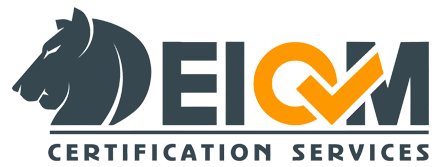Table of contents
Key Objectives of ISO 18541
At its core, ISO 18541 aims to make sure that all players in the automotive repair industry have fair and equal access to essential vehicle information. Here’s a closer look at its key objectives:
Ensuring Access to Repair and Maintenance Information (RMI)
One of the main goals of this standard is to ensure that repair and maintenance data is accessible to anyone who needs it, from large dealerships to small, independent repair shops. This levels the playing field and gives consumers more choice when it comes to vehicle repairs.
Protecting Consumer Rights and Choices
By enforcing fair access to information, ISO 18541 protects consumers’ rights. Vehicle owners aren’t limited to only manufacturer-approved repair facilities; instead, they have the freedom to choose where they want their vehicle serviced, often at a lower cost.
Components of ISO 18541
This standard is not just a single document; it’s a collection of requirements that revolve around accessibility, security, and standardization. Let’s break down some of its critical components.
Web-Based Access to RMI
Gone are the days of hefty manuals. ISO 18541 mandates that RMI must be available online, ensuring that technicians can easily access the information they need via the web. This web-based access is crucial in modern automotive repair, where speed and accuracy are vital.
Data Security and Privacy
With great access comes great responsibility. ISO 18541 also emphasizes the need for secure handling of data. Since sensitive information is often involved, the standard requires that proper security measures are in place to protect both consumers and manufacturers from data breaches or unauthorized access.
Uniform Data Structure and Presentation
Ever struggled to find a particular section in a manual because it wasn’t structured well? ISO 18541 solves that problem by standardizing the way information is presented. This means that regardless of the vehicle manufacturer, the repair data will follow a similar format, making it easier to find and use.
Who Benefits from ISO 18541?
This standard benefits a broad spectrum of stakeholders in the automotive industry. Here’s a breakdown of who gains the most from this standard.
Automotive Repair Technicians
For technicians, access to standardized RMI means they can diagnose and repair vehicles more efficiently. It removes barriers and allows them to work on various makes and models with ease.
Independent Repair Shops
Independent shops, which may not have the resources of large dealerships, benefit from fair access to RMI. This allows them to compete in the market and offer quality services to their customers without being disadvantaged by lack of information.
Vehicle Owners and Consumers
Consumers enjoy more options for vehicle repair. They aren’t tied to dealership networks and can explore more affordable repair options while maintaining the quality of service.
Vehicle Manufacturers and OEMs
While it may seem that manufacturers would prefer to keep repair information exclusive, ISO 18541 helps them by setting clear standards for sharing RMI. This transparency can build trust with customers and support a broader network of service providers.
ISO 18541 and Vehicle Diagnostics
A significant part of vehicle repair today involves diagnostics—pinpointing what’s wrong with a car based on error codes and system data. ISO 18541 makes this easier by ensuring that diagnostic information is part of the accessible RMI. Whether it’s reading fault codes or understanding complex vehicle systems, standardized information helps technicians get to the root of issues faster, saving time and reducing vehicle downtime.
Implementation of ISO 18541
Implementing ISO 18541 is a multi-step process that involves various stakeholders in the automotive ecosystem. Here’s how it generally works:
Steps for Implementing ISO 18541 for Automakers
- Assessing RMI Requirements: Automakers need to evaluate what repair and maintenance information they have and ensure it aligns with ISO 18541 guidelines.
- Developing Online Portals: Creating web-based platforms where RMI can be accessed securely.
- Training and Support: Providing training for both internal teams and external repair networks on how to use and manage the information.
Conclusion
ISO 18541 plays a vital role in today’s automotive industry by ensuring that repair and maintenance information is accessible, standardized, and secure. This standard helps balance the scales between manufacturers and independent service providers, ultimately benefiting consumers with more choices and better services. As the industry continues to evolve, ISO 18541 will remain a cornerstone in ensuring that vehicles are maintained efficiently and safely, no matter how advanced they become.

